Playing the Dovin Deck Mtg White and Blue

Preview season has begun, and in the first few days, we've already been
shown two of the planeswalkers we'll have the opportunity of playing with
in Ravnica Allegiance.
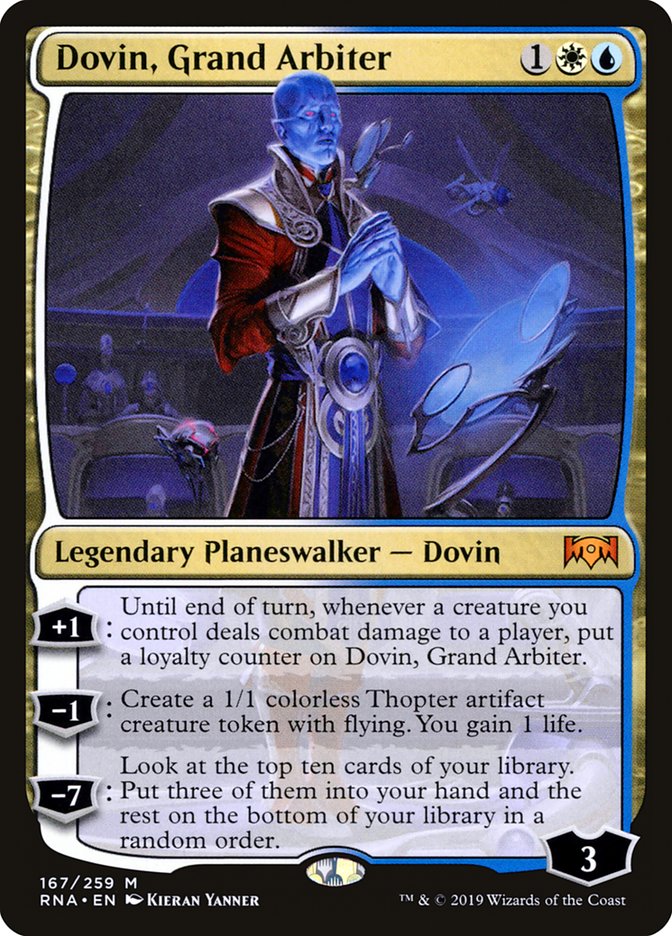
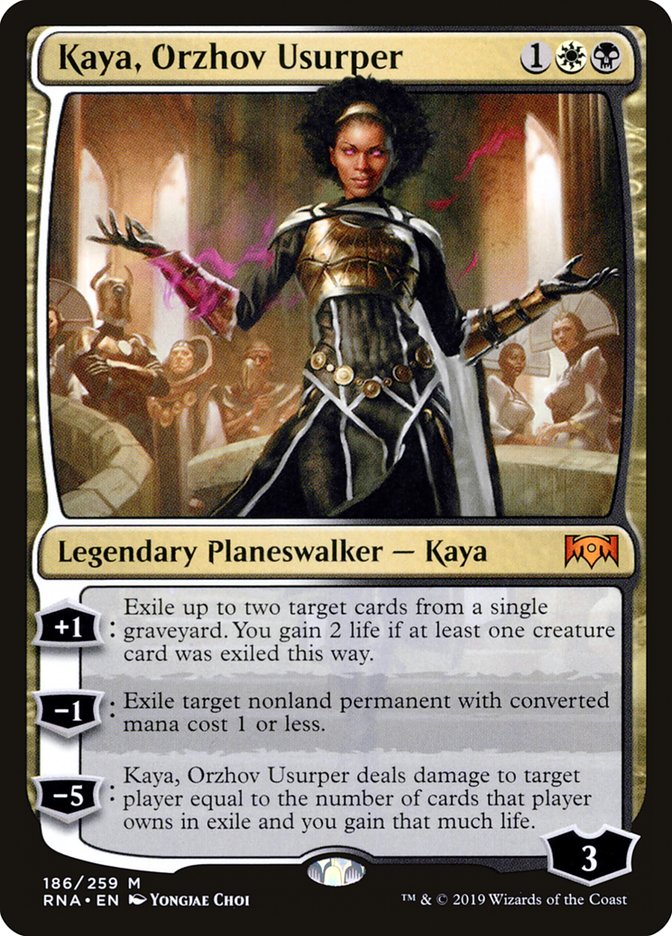
Both cards previewed are characters we've seen before. Dovin, Grand
Arbiter, the first planeswalker previewed, was first seen on the plane of
Kaladesh; and Kaya, Orhzov Usurper appears for the first time since Conspiracy: Take the Crown, and marks her first appearance in a
non-promotional set. Today, I'll be focusing on Dovin, Grand Arbiter and
some preliminary ideas surrounding the card and propose some ways to start
building around them.
I'm probably not alone in being surprised with the abilities of the new
Dovin. The first Dovin planeswalker from Kaladesh, Dovin Baan, seemed to
slot best into controlling strategies, as is typical of Azorius colored
spells. The abilities were purely defensive in nature, featuring an
ultimate designed to help win a longer, drawn out affair:
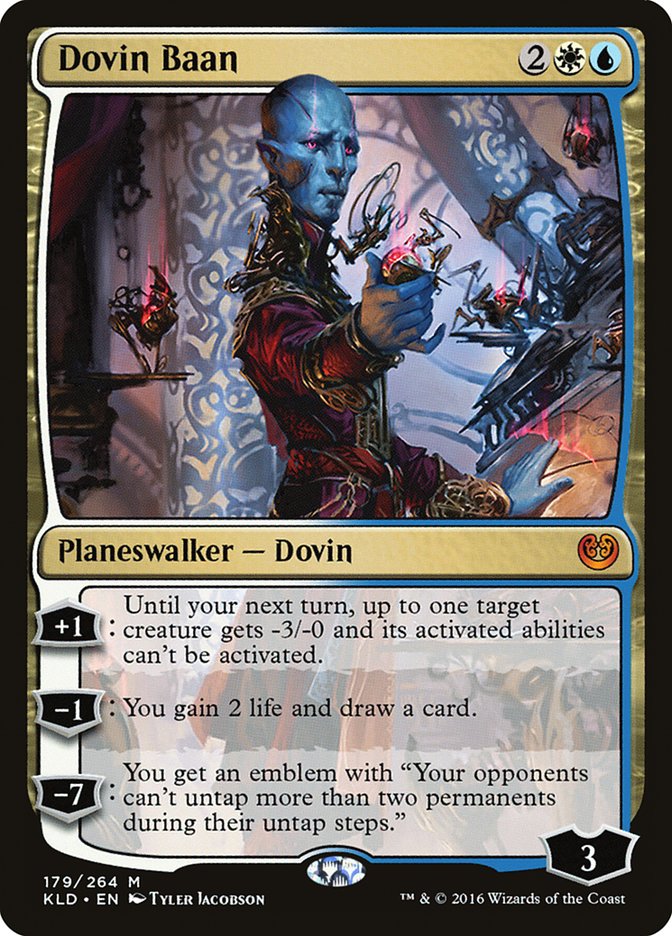
This time around, however, is much different. The abilities of Dovin, Grand
Arbiter seem to fit best in decks interested in attacking. Let's break down
the abilities one by one, in detail.
+1: Until end of turn, whenever a creature you control deals combat
damage to a player, put a loyalty counter on Dovin, Grand Arbiter.
Easily the most important ability on the card, loyalty abilities such as
this one that allow for additional loyalty counters to be added to a
planeswalker usually demand that you build your deck around said ability to
get the most mileage out of it. Since Dovin gains a loyalty counter for
each creature that connects with the opponent, the first level of building
a deck with Dovin is trying to figure out a way to get as many creatures
onto the battlefield to start attacking after Dovin resolves and ticks up.
For example, a hypothetical curve in Standard of Legion's Landing on Turn
1, Saproling Migration on Turn 2, and Dovin, Grand Arbiter on Turn 3 allows
you to activate the +1 ability, attack and potentially connect with three
creatures, and have Dovin ready to activate his -7 ability as early as 4.

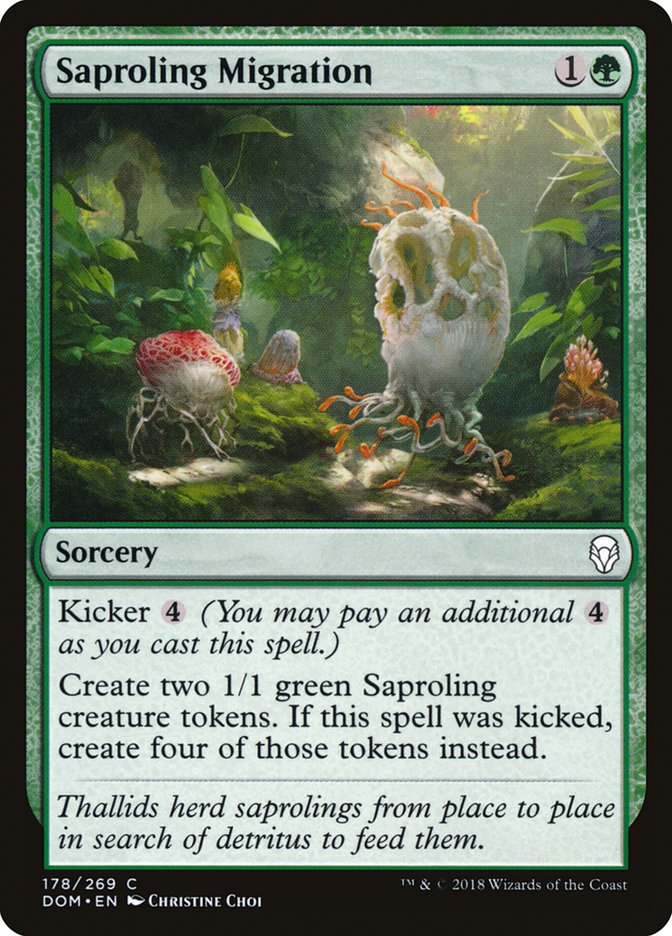
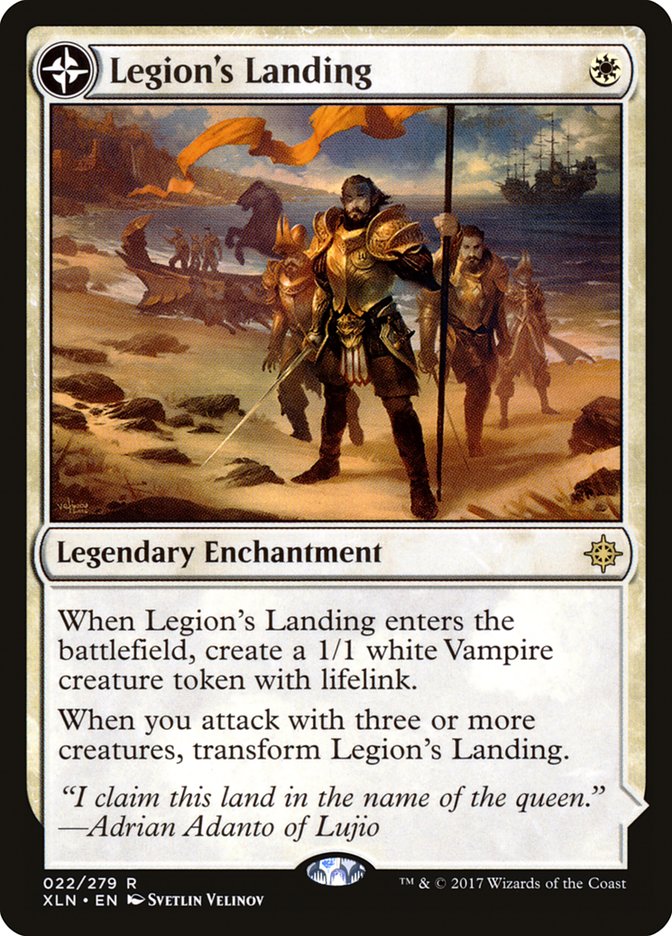
The dream.
Thinking in terms of established decks in the Standard metagame, the
white-based aggressive decks such as Boros Aggro and Selesnya Tokens are
likely the "level zero" places to slot Dovin in and see how it plays out in
practice. Those decks are fantastic at producing a ton of creatures in a
very short time span in the early game, and can likely make very good use
of this first ability. With the introduction of Hallowed Fountain,
splashing a different or even third color into these decks becomes a much
simpler task than it is now.
-1: Create a 1/1 colorless Thopter artifact creature token with flying.
You gain 1 life.
Although this is a more defensive ability than the first, creating a
Thopter token fits in well with the types of strategies I discussed above.
Given the token's evasive nature, it is not unreasonable to cast Dovin, use
this ability, then use the +1 ability before attacking with the token on
the following turn, which catches Dovin, Grand Arbiter back up on loyalty
very quickly. The one life is incidental, but definitely helps, as getting
a few activations in a single game can go a long way towards swinging a
race in your favor. Since Dovin, Grand Arbiter can use this ability back to
back turns and remain on the battlefield, assuming no interference, it
seems reasonable that doing so will happen fairly often, given the fact
that this planeswalker only costs three mana. It does not seem unreasonable
to me to use this ability two turns in a row, then use the tokens to power
out a Venerated Loxodon on curve. A couple of Thopters with +1/+1 counters
on them, a 4/4, and a planeswalker leftover for good measure will demand a
strong answer from your opponent, and the resource and deckbuilding cost to
create this scenario is on the lower side.
-7: Look at the top ten cards of your library. Put three of them into
your hand, and the rest on the bottom of your library in a random
order.
When evaluating planeswalkers, it is usually best to analyze the
non-"ultimate" abilities to get a sense of their Constructed playability,
but such is not the case for the Grand Arbiter. If you build around Dovin
correctly, your deck should be able to regularly get this planeswalker into
the seven to eight loyalty counter range with relative ease, and I would
wager that it is easier to activate this last ability with a much higher
regularity than your typical ultimate ability. As for the ability itself, I
need not remind many of you of a certain card that's only legal (and at
restricted, no less) in the highest power level format Magic has to offer:

Having cast many a Dig Through Time in the glory days of Khans or Tarkir Standard, I'm very excited to have the opportunity
to potentially utilize that effect leveled up! If we once again put
ourselves in a scenario where we are utilizing Dovin, Grand Arbiter in a
tokens-based or low to the ground white-based aggressive strategy, we can
presume that the decks are full of set up/low power cards (Saproling
Migration, Legion's Landing, Snubhorn Sentry, etc.) and payoffs/high power
cards (Venerated Loxodon, History of Benalia, March of the Multitudes,
Trostani Discordant, etc.) Getting Dovin up to a high enough loyalty
counter threshold to activate the the -7 ability usually requires the
assistance of the low powered cards, since they're cheaper and can work
with Dovin's +1 ability much better to help connect with your opponent's
life total before they are able to muster a defense against you. This
ability gives you an enormous amount of selection and raw card draw fairly
unparalleled in terms of power from draw spells and abilities of yore, and
in doing so, can help you find a handful of your more powerful spells to
help cross the finish line in the mid to lategame.
Though it is a goldfish scenario, the aforementioned curve of Legion's
Landing into Saproling Migration into Dovin, Grand Arbiter allows you to
potentially use this ability as early as Turn 4. This theoretical (and
admittedly unlikely) scenario gives you the ability to have nothing but
haymakers to cast for the remainder of the game's lifespan, and although
this is less likely to happen turn 4, any deck not presenting a large
enough battlefield presence of their own in the early turns will find it
difficult to keep Dovin below seven loyalty not long after that.
I've talked a bunch about hypotheticals up to this point, but I'd now like
to present a couple of first drafts of decks that already exist in Standard
right now, with Dovin, Grand Arbiter woven into the mix.
These lists, of course, come along with the caveat that there is still a
plethora of cards yet to be previewed, and as such, means that these lists
should be examined in that context. That being said, I imagine these will
be good starting points. Let's take a look:
Here we have a different take on white-based aggro, this time switching
from blue from red as the splash color. Losing Experimental Frenzy,
Banefire, and Heroic Intervention but gaining access to a powerful
build-around planeswalker, countermagic, and some other great creatures
like the newly previewed Deputy of Detention is a trade I am happy to make.
Godless Shrine and Hallowed Fountain's printing blesses new "White Weenie"
decks with the ability to splash both black and blue, respectively, giving
Standard's best aggressive deck a couple of potential different new forms
to take on in the new format.
Speaking of better mana, we can take a look at Dovin in a three-color deck
that sorely needed Breeding Pool and Hallowed Fountain to allow for the
blue splash: Selesnya Tokens!
Selesnya feels mildly more challenging to slot in Dovin into the existing
shell, so perhaps it is correct to start over and build the deck from the
ground up with more token generators. That being said, splashing blue
provides the benefit of a more diverse sideboard, most importantly
including countermagic that can be used to stop the cards that usually give
Selesyna the most trouble, namely wrath spells like Cleansing Nova and
Deafening Clarion. Having access to Deputy of Detention to deal with
Niv-Mizzet, Parun, a card that can give an army of 1/1 Soldier tokens a
word of hurt and is a fantastic upgrade, given the fact that it is a non
instant or sorcery speed answer to the Firemind.
I look forward to doing lots of testing and tuning with Dovin, Grand
Arbiter to find the right shell. The uniqueness of this planeswalker makes
him very interesting to try and crack the code on what deck he will work
best in.
On a related note, I would like to give Play Design a personal kudos for
the way Dovin came out. Typically, Constructed playable planeswalkers are
usually very self-sufficient, requiring very little additional help to take
over a game (see Gideon, Ally of Zendikar, Chandra, Torch of Defiance, and
Teferi, Hero of Dominaria for fairly recent examples of this). Dovin, Grand
Arbiter, to me, seems to have struck a very satisfying balance between
power level and synergy. The card is fairly low to moderate power level on
its own, but with the help of the right shell around it, it skyrockets in
power into a force that will quickly bury your opponent in cards and
creatures. This delta in power level depending on how you build your deck
around Dovin stands out to me as something we haven't seen in a ton of in
recent Standard sets, and I look forward to seeing this being a design
decision for planeswalkers moving forward.
I don't know if it's Ravnica itself that always seems to hit the mark in
terms of fun to play and exciting cards, but between Dovin, Grand Arbiter
and some of the other cards previewed so far, my head is spinning with
excitement at all of the possibilities Ravnica Allegiance could
bring us.

Source: https://articles.starcitygames.com/articles/why-the-new-dovin-should-change-how-you-play-planeswalkers/
0 Response to "Playing the Dovin Deck Mtg White and Blue"
Post a Comment